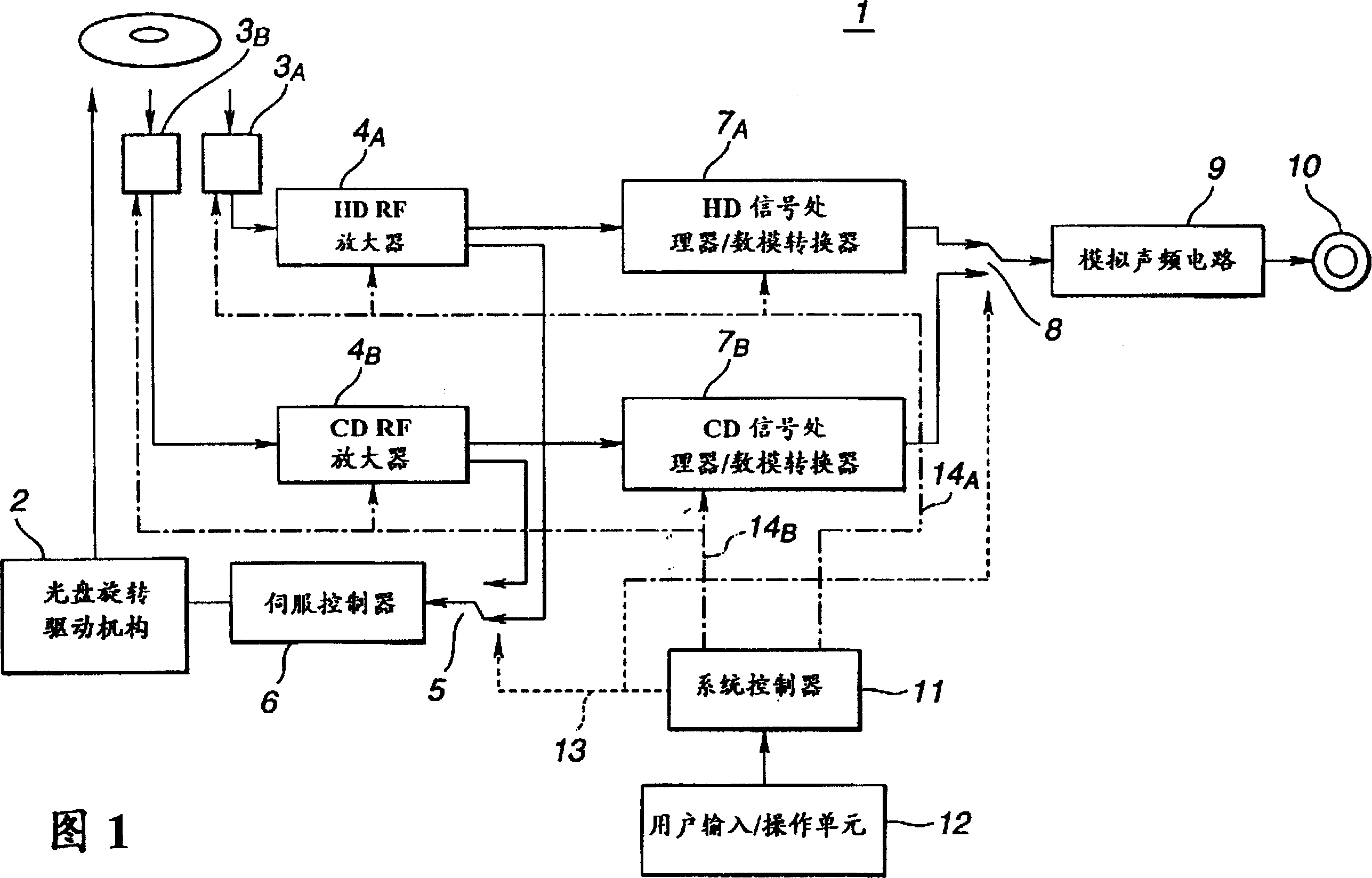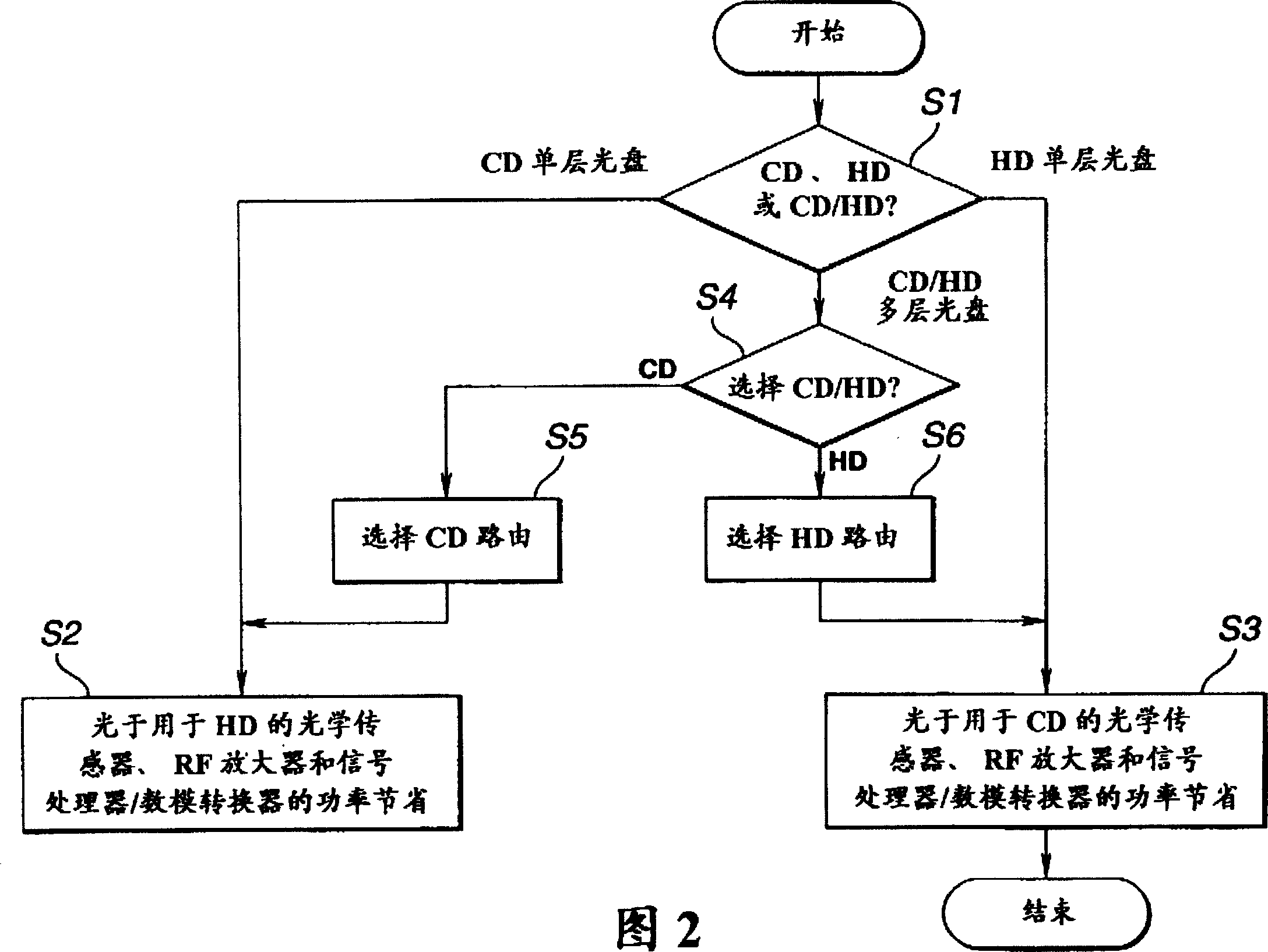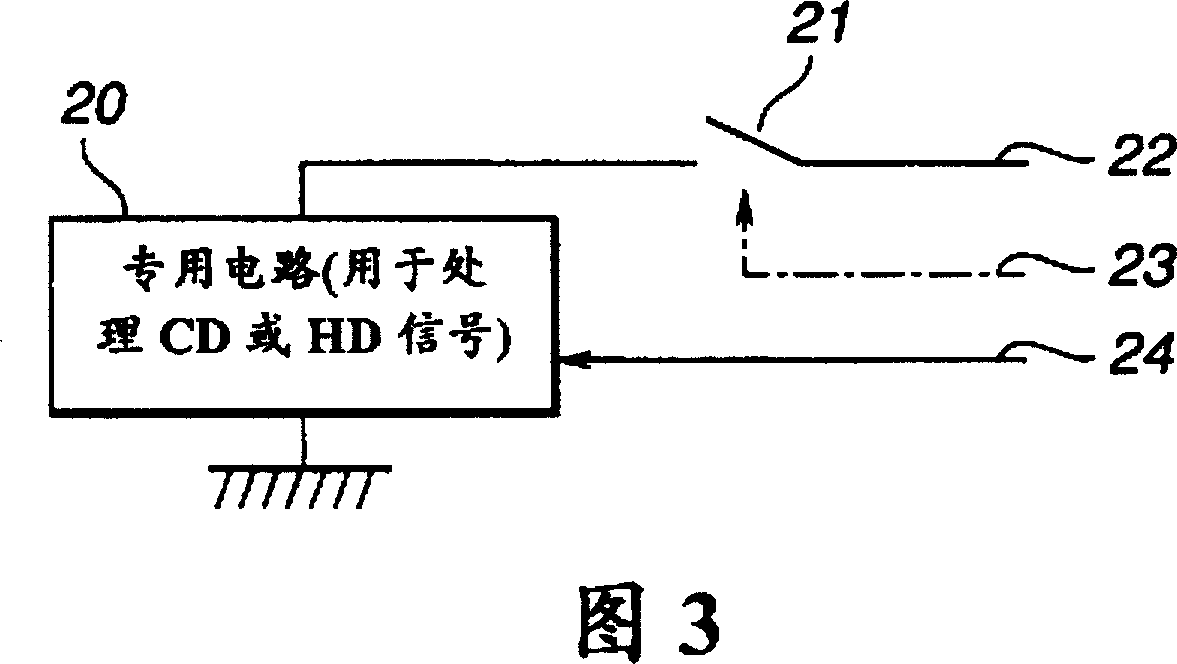Optical disk replaying machine and method
A technology of a player, an optical disc, applied in the direction of recording/reproducing by optical methods, recording of information on a magnetic disc, digital recording/reproducing, etc., can solve the problems of influence, large amount of power, harmful sound quality, etc.
- Summary
- Abstract
- Description
- Claims
- Application Information
AI Technical Summary
Problems solved by technology
Method used
Image
Examples
Embodiment Construction
[0045] The invention is further described below in terms of disc players suitable for both types of discs. The compact disc player is adapted to selectively read compact discs (CDs; hereinafter referred to as "CD discs" for ease of illustration and explanation) and high density recording discs and / or have CDs recorded on their first layer. signal, and an HD signal is recorded on its second layer.
[0046] Here, the CD refers to an optical disc having a first audio signal of 16 quantization bits sampled at a sampling frequency of 44.1 KHz recorded therein.
[0047] On the other hand, here, a high density (HD) recording optical disc refers to an optical disc having a second digital audio signal of 1 quantization bit (hereinafter referred to as "HD signal") sampled at a sampling frequency of 64*44.1 KHz.
[0048] Referring now to FIG. 1, there is schematically illustrated in block diagram form an embodiment of an optical disc player according to the present invention suitable fo...
PUM
 Login to View More
Login to View More Abstract
Description
Claims
Application Information
 Login to View More
Login to View More - R&D
- Intellectual Property
- Life Sciences
- Materials
- Tech Scout
- Unparalleled Data Quality
- Higher Quality Content
- 60% Fewer Hallucinations
Browse by: Latest US Patents, China's latest patents, Technical Efficacy Thesaurus, Application Domain, Technology Topic, Popular Technical Reports.
© 2025 PatSnap. All rights reserved.Legal|Privacy policy|Modern Slavery Act Transparency Statement|Sitemap|About US| Contact US: help@patsnap.com



